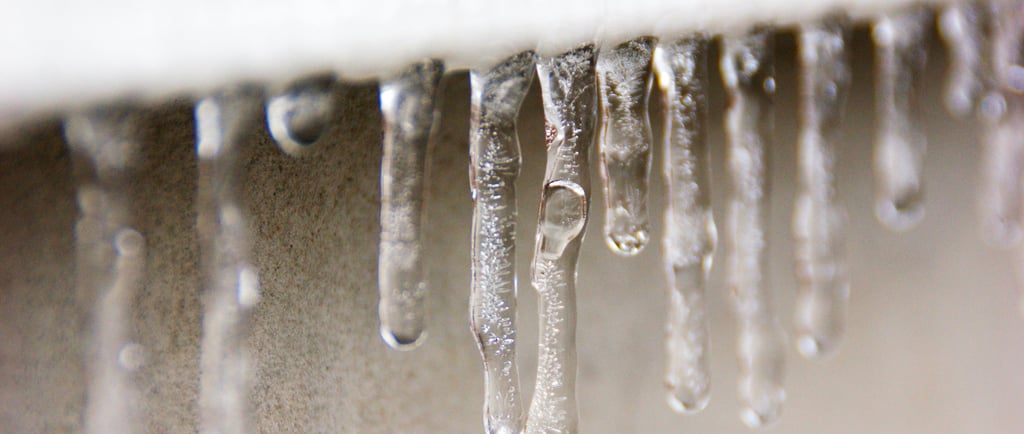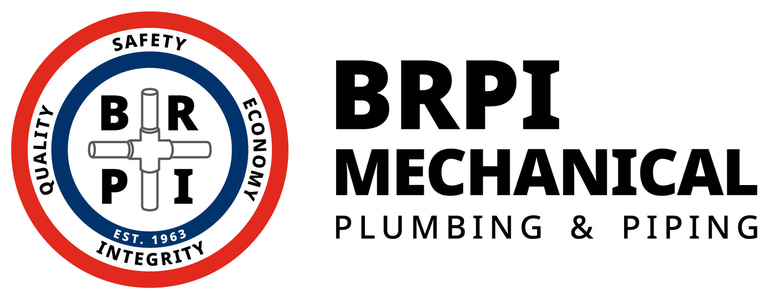Preventing Frozen Pipes: A Step-by-Step Winter Plumbing Guide
WINTER PLUMBINGRESIDENTIAL PLUMBINGPREVENTIVE PLUMBING TIPS
1/7/20254 min read


As the coldest months of winter settle in, the risk of frozen pipes can become a major concern for homeowners. When temperatures drop, frozen pipes can burst, leading to extensive water damage, and costly repairs—problems no homeowner wants to face this year.
Fortunately, with the right precautions, frozen pipes are largely preventable. In this guide, we’ll explain how and why pipes freeze, the issues this can cause, and most importantly, the steps you can take to keep your plumbing safe throughout winter.
Why Frozen Pipes Are a Serious Problem
When temperatures fall below freezing (32°F), the water inside your pipes can freeze. Water expands as it turns to ice, creating pressure that can crack or burst your pipes. But the problem doesn’t end there. When the ice thaws, water floods through these cracks, leading to water damage in walls, floors, and ceilings.
Frozen pipes often occur in areas of your home that are less insulated or exposed to the cold, such as basements, crawl spaces, attics, garages, and exterior walls. Fortunately, these risks can be mitigated with proactive measures.
Step 1: Understand Which Pipes Are at Risk
Before taking action, identify vulnerable pipes in your home.
Unheated spaces: Pipes in basements, attics, garages, or crawl spaces are exposed to colder temperatures.
Exterior walls: Pipes running along poorly insulated walls are susceptible to freezing.
Outdoor plumbing: Spigots, garden hoses, and irrigation systems are at high risk during freezing weather.
Knowing where your pipes are most exposed helps you target your efforts effectively.
Step 2: Insulate Your Pipes
Insulating your pipes is one of the easiest and most effective ways to prevent freezing. Focus on exposed pipes in unheated or poorly insulated areas.
How to Insulate Pipes
Foam pipe insulation: Wrap foam sleeves around exposed pipes. These sleeves are affordable, widely available, and easy to install.
Heat tape or heat cables: Apply heat tape or cables to pipes in extreme cold conditions. These devices use electricity to keep pipes warm.
Insulated faucet covers: Use covers to protect outdoor spigots from freezing temperatures. These covers easily slip over your faucet, providing an extra layer of insulation.
Check that all pipe insulation is securely fitted, leaving no gaps where cold air could reach the pipes.
Step 3: Seal Drafts and Cracks
Cold drafts can significantly lower the temperature around pipes, increasing the risk of freezing. Sealing cracks and openings in your home can prevent this.
Areas to Inspect
Around windows and doors: Use caulk or weatherstripping to seal gaps.
Where pipes enter walls or floors: Fill gaps around pipes with expanding foam or silicone caulk.
Uninsulated spaces: Consider adding insulation to walls, floors, and ceilings in areas like attics and crawl spaces.
By blocking drafts, you’ll not only protect your plumbing but also improve your home’s overall energy efficiency.
Step 4: Keep Water Moving
Moving water is less likely to freeze than stagnant water. During particularly cold weather, allow faucets connected to vulnerable pipes to drip slowly.
When and Where to Let Faucets Drip
During extreme cold snaps or overnight when temperatures drop further.
Faucets connected to pipes running along exterior walls or in unheated areas.
Both hot and cold water lines, as freezing can occur in either.
A slow drip might seem wasteful, but it’s far less costly than repairing a burst pipe.
Step 5: Protect Outdoor Plumbing
Outdoor faucets and irrigation systems are especially prone to freezing. Preparing them properly before winter can save you from major headaches.
Steps to Winterize Outdoor Plumbing
Disconnect and drain garden hoses.
Shut off the water supply to outdoor spigots using the indoor shutoff valve if available.
Open the spigots to allow any remaining water to drain out.
Install insulated faucet covers to provide an extra layer of protection.
If you have a sprinkler system, ensure it’s professionally winterized to prevent freezing in underground lines.
Step 6: Maintain a Consistent Indoor Temperature
Cold air inside your home can cause pipes to freeze, even in heated spaces. Maintaining a stable indoor temperature is essential.
Tips for Keeping Your Home Warm
Set your thermostat to a consistent temperature, at least 55°F, even at night or when you’re away.
Open cabinet doors under sinks to let warm air circulate around the pipes.
Close garage doors to prevent cold air from entering.
Space heaters can also help in areas prone to freezing, but use them safely and never leave them unattended.
Step 7: Be Prepared for Extended Absences
If you’re traveling or away from home during the winter, take additional precautions to protect your plumbing.
Steps to Take Before Leaving
Keep your thermostat set to at least 55°F.
Shut off the main water supply to your home and drain your pipes by opening faucets and flushing toilets.
Ask a neighbor or friend to check on your home periodically.
Taking these measures ensures your home is safeguarded against freezing pipes while you’re away.
Step 8: Know What to Do If a Pipe Freezes
Even with the best preparations, pipes can freeze during extreme conditions. Acting quickly can prevent further damage.
How to Thaw a Frozen Pipe
Locate the frozen section of the pipe. Look for frost or areas where water flow has stopped.
Turn on the faucet connected to the frozen pipe to relieve pressure and allow water to flow as the ice melts.
Apply gentle heat to the pipe using a hairdryer, heating pad, or warm towels. Start near the faucet and work your way toward the frozen section.
Never use an open flame or high-heat device, as this can damage the pipe or create a fire hazard.
If you’re unable to locate the frozen section or if the pipe has burst, shut off your home’s water supply immediately and contact a plumber for assistance.
Common Missteps to Avoid
To ensure your efforts are successful, avoid these common mistakes:
Neglecting outdoor plumbing: Many homeowners forget about outdoor spigots and hoses, which are often the first to freeze.
Turning off heat completely: Even if you’re away, keep your thermostat at a safe temperature to protect your pipes.
Ignoring small drafts: Minor air leaks can create enough cold to freeze nearby pipes, so address them promptly.
Final Thoughts: Stay Proactive This Winter
Preventing frozen pipes is all about preparation and vigilance. By insulating pipes, sealing drafts, maintaining indoor warmth, and keeping water flowing, you can safeguard your plumbing system throughout the winter months.
January brings us some of the coldest weather of the year. If you haven’t already done so, now is the time to take action. With these steps, you can enjoy peace of mind and avoid the costly, time-consuming repairs that come with frozen or burst pipes. Stay warm, stay safe, and keep your plumbing system in top shape this winter.
Contact
Main Office
Social
3560 S 2200 W
West Valley City, UT 84119
P.O. Box 25123
Salt Lake City, UT 84125
Monday – Friday:
7:00 am – 3:30 pm
Billing & Mailing Address
Hours
© Budd M. Rich Plumbing Company, DBA BRPI Mechanical. All rights reserved.
